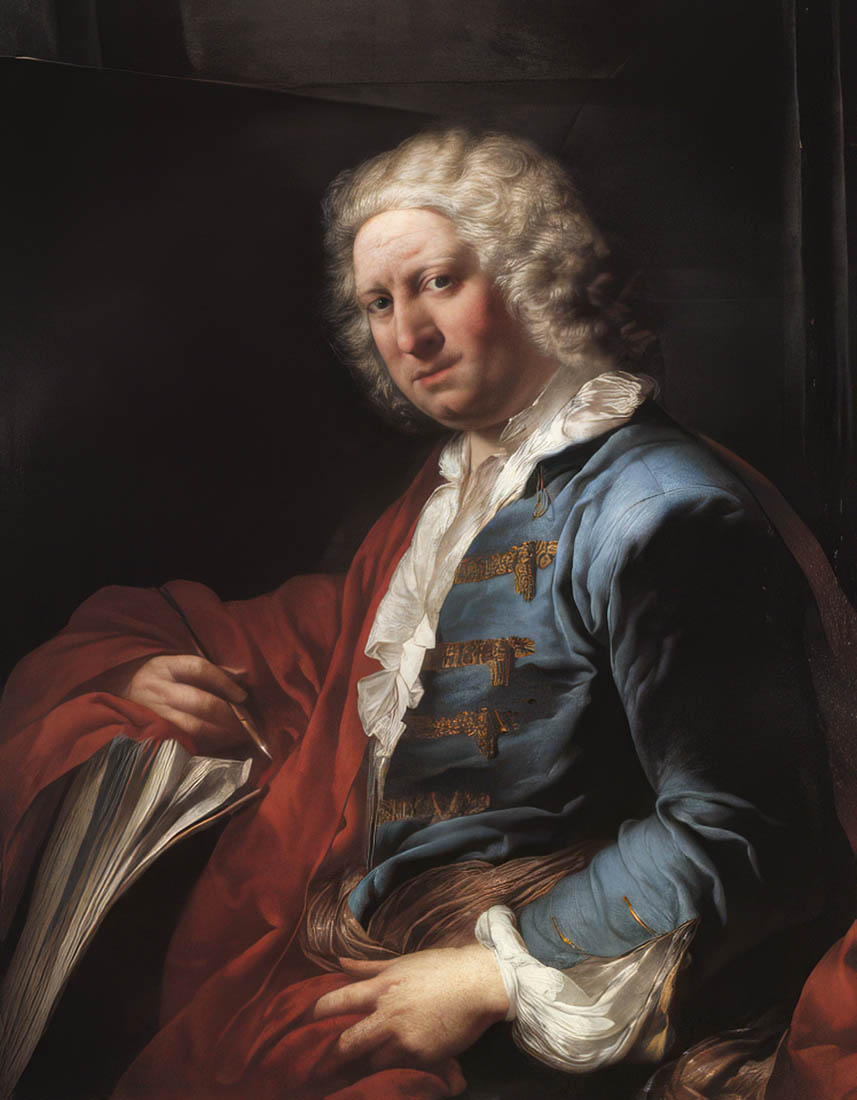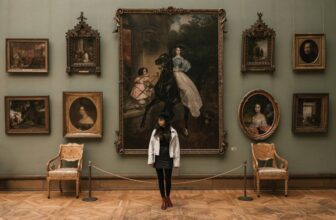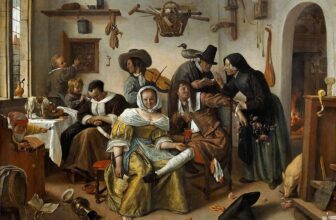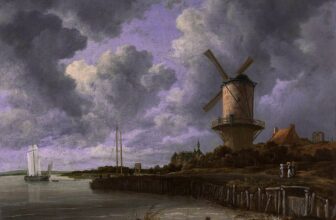
Giovanni Paolo Panini: Master of Perspective, Architecture, and the Eternal City
Giovanni Paolo Panini (1691–1765) was one of the most celebrated Italian painters and architects of the 18th century, renowned for his meticulous depictions of Rome’s ancient ruins, grand architecture, and idealized cityscapes. His art stands at the intersection of classical grandeur and Baroque spectacle, capturing not only the physical beauty of Rome but also the spirit of antiquity that defined the Grand Tour era.
This comprehensive article explores Panini’s life, his most famous artworks, his unique painting style, and the lasting value, both cultural and financial, of his masterpieces.
Early Life and Training
Giovanni Paolo Panini was born in Piacenza, Italy, in 1691. From a young age, he demonstrated remarkable artistic talent, particularly in drawing and perspective. He trained under Giuseppe Natali and later Andrea Galluzzi, two regional artists who influenced his early Baroque sensibility.
By his early twenties, Panini moved to Rome, which was then the artistic capital of Europe. Rome became not only his home but also his greatest muse. Surrounded by the ruins of the Roman Empire, the Baroque churches of Bernini and Borromini, and a growing market for Grand Tour souvenirs, Panini found the perfect setting for his creative ambitions.
Rise to Fame in Rome
Panini’s reputation grew rapidly in Rome during the 1720s and 1730s. He joined the Accademia di San Luca and became known for his command of architectural perspective, dramatic composition, and precision of detail. His early works focused on interiors of grand buildings like St. Peter’s Basilica, the Pantheon, and Roman palaces, where he demonstrated how to blend realism with grandeur.
Soon, Panini developed a distinctive genre called vedute ideate, or capriccio paintings, which combined real architectural landmarks with imaginary elements. These works catered perfectly to the wealthy European tourists making the Grand Tour, who desired artistic mementos of the glory of ancient Rome.
Artistic Style and Themes
Panini’s work is characterized by:
Architectural precision: His paintings display mathematical mastery of perspective, giving depth and realism to large spaces.
Classical references: His works teem with statues, ruins, and arches that evoke the Roman Empire’s cultural prestige.
Dynamic human figures: Unlike many vedute painters, Panini populated his scenes with scholars, tourists, and everyday Romans, bringing life to his architectural fantasies.
Luminous color and clarity: His use of light reflects both Baroque theatricality and Enlightenment clarity, making his scenes both realistic and idealized.
Through these traits, Panini’s paintings transcend mere documentation, they become visual celebrations of civilization itself.
Giovanni Paolo Panini’s Most Famous Artwork
Among Panini’s numerous masterpieces, one stands above all others in fame and influence:
“Ancient Rome” (1757)
(Also known as Gallery of Views of Ancient Rome)
This monumental painting, housed in the Louvre Museum in Paris, is Panini’s magnum opus. It represents an imagined gallery filled with paintings of ancient Roman monuments, each depicted as if hanging within the same room. The viewer sees the Colosseum, the Pantheon, the Arch of Constantine, Trajan’s Column, and dozens of other architectural wonders, all rendered with astonishing precision.
Commissioned by Count de Stainville, later the Duc de Choiseul, “Ancient Rome” was paired with another masterpiece titled “Modern Rome”. Together, the two paintings serve as visual encyclopedias of the city’s past and present glories.
Symbolism and Composition
In Ancient Rome, Panini presents more than a collection of buildings, he composes a visual essay on history, art, and memory. The monuments represent the continuity between antiquity and Panini’s own time, while the elegant figures of patrons, artists, and visitors emphasize the act of cultural preservation.
The paintings displayed within the painted gallery are accurate miniature reproductions of Panini’s earlier works and real Roman landmarks, demonstrating his technical brilliance. The architecture of the imagined gallery mirrors the style of ancient temples, suggesting that art itself has become a sacred space.
“Modern Rome” (1757)
This companion piece, also in the Louvre, shows a similar interior filled with paintings of modern Roman landmarks, St. Peter’s Basilica, Piazza Navona, the Trevi Fountain, and other 18th-century architectural marvels. Together, Ancient Rome and Modern Rome form a dialogue between the past and present, celebrating the continuity of human achievement.
Panini’s inclusion of his patrons, elegantly dressed in contemporary attire, serves as a subtle commentary on taste, wealth, and the collecting culture of his time. These works were both aesthetic triumphs and symbols of intellectual sophistication.
Other Notable Works
While Ancient Rome and Modern Rome remain his most famous creations, several other works showcase Panini’s mastery:
“The Interior of St. Peter’s Basilica” (1731) – A breathtaking perspective study of one of the world’s most iconic churches.
“The Piazza San Pietro with the Departure of the Duc de Choiseul” (1754) – A blend of portraiture and architecture celebrating the social rituals of the Grand Tour.
“Capriccio of Roman Ruins” (1740s) – An imaginative composition combining multiple ruins in a single harmonious view.
“The Circus Maximus” – A dynamic rendering of the ancient chariot-racing venue, showcasing Panini’s fascination with Roman engineering and spectacle.
Each of these paintings reveals Panini’s dual identity as both an artist and architect, balancing mathematical precision with emotional resonance.
Influence and Legacy
Panini’s influence extended far beyond Italy. His approach to architectural fantasy inspired generations of vedutisti (view painters), including Canaletto, Giovanni Battista Piranesi, and later Hubert Robert in France.
For travelers on the Grand Tour, Panini’s paintings were treasured as souvenirs and educational tools. They helped shape Europe’s collective image of Rome as a timeless city where ancient grandeur coexists with modern life.
In art history, Panini is often seen as a bridge between the Baroque and the Neoclassical eras. His works anticipate the Enlightenment fascination with archaeology and rational order while retaining the emotional grandeur of the Baroque.
The Market Value of Panini’s Art
1. Historical and Cultural Value
The true value of Giovanni Paolo Panini’s art lies in its cultural significance. His paintings are invaluable visual records of Rome in the 18th century, before many ancient monuments were damaged or restored. They serve as artistic documentation of a city at the heart of Western civilization.
Collectors and scholars prize Panini for:
His architectural accuracy, often used by historians to study lost or altered monuments.
His role in shaping the visual identity of Rome during the Enlightenment.
His influence on European art, travel, and the development of classical aesthetics.
For museums and cultural institutions, Panini’s paintings are not merely artworks, they are pieces of history.
2. Market and Auction Value
In the art market, Panini’s works command significant prices, reflecting both their rarity and historical importance.
Original oil paintings by Panini have sold at major auctions such as Christie’s and Sotheby’s for prices ranging between $500,000 and $5 million USD, depending on size, condition, and subject matter.
Smaller or studio works by Panini’s workshop can range from $100,000 to $500,000.
Prints and engravings inspired by his compositions, though less valuable, remain popular among collectors and can range from $2,000 to $20,000.
Paintings like Ancient Rome and Modern Rome are considered priceless national treasures and are unlikely ever to appear on the open market. Their combined historical and artistic value is estimated to exceed $50 million, though such works are held permanently in museum collections.
3. Investment and Appreciation
Panini’s art has demonstrated strong long-term appreciation due to several factors:
Historical relevance: His work represents a key moment in the evolution of European art and architecture.
Limited supply: Few authentic Panini paintings remain in private hands.
Academic prestige: Panini’s role in art history ensures continual scholarly interest and exhibition demand.
Collectors who invest in Panini’s works often do so not only for financial reasons but also for the intellectual prestige associated with owning a piece of Rome’s visual history.
Why Giovanni Paolo Panini Matters Today
In the modern world, dominated by photography and digital media, Panini’s paintings remind us of the enduring power of human craftsmanship and vision. His art invites us to slow down and appreciate architecture, history, and perspective as intertwined expressions of civilization.
Panini’s work resonates especially today because it embodies:
The beauty of memory: His canvases preserve the grandeur of monuments that have since weathered or disappeared.
The spirit of discovery: Like the Grand Tourists of his time, viewers of Panini’s paintings embark on an intellectual and emotional journey through history.
A dialogue between eras: His Ancient Rome and Modern Rome continue to inspire reflection on how we preserve cultural heritage in a rapidly changing world.
Giovanni Paolo Panini remains one of the most important figures in 18th-century art. His mastery of architectural perspective, his deep love for Rome, and his ability to merge imagination with historical accuracy made him the unrivaled painter of the Eternal City.
From his dazzling “Ancient Rome” and “Modern Rome” to his intricate interior views of churches and palaces, Panini’s art offers not only aesthetic pleasure but also a timeless lesson in how civilization remembers itself.
The value of Panini’s art, whether measured in millions of dollars, in cultural heritage, or in the emotions it stirs, remains immeasurable. He captured Rome not just as a place, but as an idea: the eternal conversation between past and present, stone and spirit, vision and reality.




